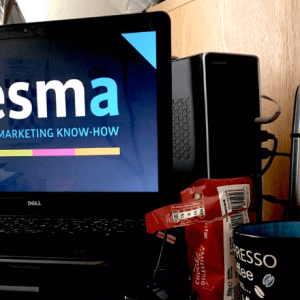This term nesma will be delivering all CIM and CIPR qualifications via interactive, live webinars to bring our popular classroom experience into your home – Here’s some advice from Deb Sharratt on making this work for you.
I’ve taught CIPR qualifications for nesma for a few years now. Helping to develop the skills and expertise of the region’s public relations professionals. These workshop sessions have always been classroom-based with the occasional telephone or skype tutorial to bring a student up to speed after missing a session or providing feedback on submissions.
In the nesma classroom, our students experience hands-on, structured learning rather than being presented with the course books, pre-written lectures and self-directed activities that distance learning can provide. Our current flexible classroom-based learning model brings with it many benefits.
- The environment allows face-to-face interactions with their peers and us their teachers
- Regular attendance enables friendships and professional relationships to develop
- Students get a chance to participate in a lecture or class discussion physically
- If students don’t understand something, they can easily ask us for clarification
However, the global coronavirus crisis that we now find ourselves in has necessitated the need to explore how we can deliver our classroom sessions online, whilst still providing as many of the benefits of studying with nesma that we can, including the very important opportunity for interactive group discussions, before we can return to classroom-based teaching.
Having delivered my first live interactive webinar for Chartered Institute of Public Relations qualifications here are my top tips…
Timing
Limit the length of the session – a classroom session is typically 6 hours over a full day with breaks for refreshment, lunch and of course comfort. Teaching interactively online is more intensive and requires more concentration so break a full day into a shorter session.
Discussion
In the classroom, one of the greatest benefits is the peer- to peer learning and indeed whether you are a student or teacher. When delivering online don’t just talk at people, as you would in a classroom introduce group discussions throughout – these don’t only just check learning but enhance it greatly by learning from each other.
Feedback
Losing the face to face communication and feedback was the hardest aspect for me. Incidental comments that can lead to great debate are impossible if best practice is observed and microphones are muted during the presentation. A great idea is to use your imagination and previous experience to imagine the verbal and non-verbal feedback you would have received in the classroom – the nods of heads or puzzled looks, chuckles, laughs and tangent topics.
Offline
I always include some workshop elements in a long day of teaching. These are very valuable to individual learning. Although group discussions and tasks are possible online it makes no sense to sit and watch people as they work on individual tasks. The solution is to use this feature of the teaching as additional offline ‘homework’. At the end of each session I’m setting homework that we will then discuss as a group at the start of the next session at which point the group will benefit from each other’s thought’s, opinions and experience.
Refreshments
Have snacks to hand. At nesma in the classroom, Lucy provides plentiful hot and cold drinks, as well as healthy and not so healthy snacks. Before your session starts, I highly recommend preparing your own refreshments – putting coffee into a flask will make sure it stays hot.
Deb Sharratt delivers CIPR qualifications on behalf of nesma. In addition, Deb is an independent practitioner in strategic PR and communication as well as delivery.
CIM courses will start week commencing Monday 20 April and the CIPR courses from April onwards.

